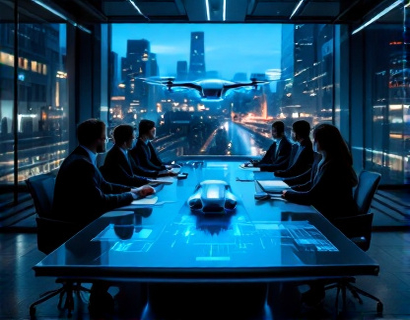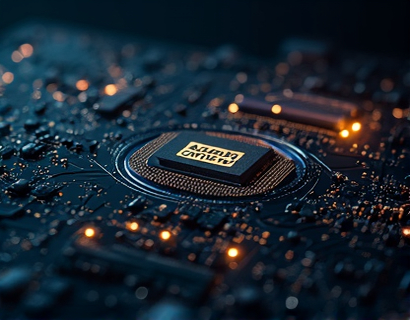Next-Gen Aerospace Innovations: Pioneering Efficiency and Safety Advancements
The aerospace industry stands at the forefront of technological innovation, driven by the relentless pursuit of efficiency, safety, and performance. Recent advancements have not only enhanced the capabilities of current aircraft and spacecraft but have also paved the way for future explorations and operations. This article delves into the latest technological breakthroughs that are reshaping the aerospace landscape, offering industry professionals and visionaries a forward-looking perspective on the future of aerospace engineering.
One of the most significant areas of innovation is in materials science. The development of advanced composites and lightweight alloys has revolutionized aircraft design. These materials offer superior strength-to-weight ratios, reducing the overall weight of the aircraft and thereby improving fuel efficiency. For instance, the use of carbon fiber reinforced polymers (CFRP) has become widespread in both commercial and military aviation. CFRP not only reduces weight but also enhances structural integrity, allowing for the design of more aerodynamic and durable aircraft. Additionally, researchers are exploring the use of nanomaterials and smart materials that can adapt to changing conditions, further enhancing the performance and safety of aerospace vehicles.
Another critical area of advancement is in propulsion technology. Traditional jet engines are being upgraded with more efficient designs and alternative fuel sources. Electric and hybrid-electric propulsion systems are gaining traction, particularly for smaller aircraft and drones. These systems offer significant reductions in noise and emissions, aligning with global sustainability goals. For example, companies are developing electric propulsion systems for regional jets, which could drastically cut down on operational costs and environmental impact. In the realm of space propulsion, ion drives and nuclear thermal engines are being researched for their potential to enable longer and more efficient space missions.
Avionics and flight control systems have also seen remarkable improvements. Advanced fly-by-wire systems and artificial intelligence (AI) are enhancing the precision and reliability of flight controls. These systems can automatically adjust to various flight conditions, reducing pilot workload and improving safety. AI-driven predictive maintenance is another game-changer, allowing for the proactive identification and resolution of potential issues before they become critical. This not only enhances safety but also reduces downtime and maintenance costs. Furthermore, the integration of real-time data analytics and machine learning algorithms is enabling more informed decision-making during flight operations.
Safety innovations extend beyond onboard systems to include advanced surveillance and collision avoidance technologies. Next-generation radar and lidar systems provide pilots and air traffic controllers with more accurate and comprehensive situational awareness. These systems can detect and track objects in all weather conditions, significantly reducing the risk of mid-air collisions. Additionally, unmanned aerial vehicles (UAVs) equipped with advanced sensors and autonomous navigation systems are being used for surveillance and inspection tasks, minimizing human exposure to dangerous environments.
In the domain of space exploration, innovations are pushing the boundaries of what is possible. Reusable rocket technology, pioneered by companies like SpaceX, is dramatically reducing the cost of access to space. The ability to land and reuse rocket boosters has transformed the economics of space launches, making space missions more feasible and frequent. Reusable spacecraft, such as NASA's Space Launch System (SLS) and the upcoming Starship, are set to further revolutionize space travel by enabling multiple missions with the same vehicle.
Another frontier in space technology is the development of in-orbit servicing and maintenance capabilities. Robotic systems are being designed to perform tasks such as satellite repairs, refueling, and deorbiting defunct satellites. These capabilities not only extend the lifespan of valuable space assets but also mitigate the growing problem of space debris. The European Space Agency (ESA) and other organizations are actively working on these technologies, with several demonstration missions planned in the coming years.
Sustainability is a key focus area in the aerospace industry, with a growing emphasis on reducing the environmental impact of aviation and space activities. Biofuels and alternative energy sources are being explored to decrease carbon emissions. For instance, algae-based fuels and synthetic fuels derived from renewable energy sources are showing promise in reducing the carbon footprint of air travel. In space, electric propulsion systems and solar power are being utilized to minimize reliance on chemical fuels and reduce waste.
Human factors and ergonomics are also receiving increased attention in aerospace design. Comfort and well-being of crew members are critical for long-duration missions, whether in commercial aviation or space exploration. Advanced life support systems, improved cabin environments, and ergonomic seating are being developed to enhance the travel experience and reduce fatigue. For space missions, habitats designed to support long-term stays in microgravity environments are being researched, focusing on psychological and physiological health.
The integration of digital twins is another innovative approach being adopted in aerospace engineering. Digital twins are virtual replicas of physical systems that can simulate and predict performance under various conditions. This technology allows engineers to test and optimize designs before physical prototypes are built, saving time and resources. In operational contexts, digital twins can monitor the health of aircraft and spacecraft in real-time, providing insights for maintenance and operational decisions.
Cybersecurity is an increasingly important aspect of aerospace technology, given the critical nature of aviation and space systems. As systems become more connected and reliant on digital technologies, the risk of cyber threats grows. Robust cybersecurity measures are being implemented to protect against potential vulnerabilities. This includes advanced encryption, intrusion detection systems, and regular security audits to ensure the integrity and safety of aerospace operations.
The future of aerospace engineering is also being shaped by international collaboration and regulatory frameworks. Global standards and regulations are being developed to ensure the safe and responsible use of new technologies. International partnerships are fostering knowledge sharing and joint research projects, accelerating innovation and addressing global challenges such as climate change and space debris. Organizations like the International Air Transport Association (IATA) and the International Astronautical Federation (IAF) play crucial roles in coordinating these efforts.
In conclusion, the aerospace industry is at a pivotal moment, driven by a convergence of technological advancements in materials, propulsion, avionics, and sustainability. These innovations are not only enhancing the efficiency and safety of current operations but are also opening up new possibilities for the future. As the industry continues to evolve, the focus on research and development will remain essential in overcoming the challenges and realizing the full potential of aerospace engineering.










































